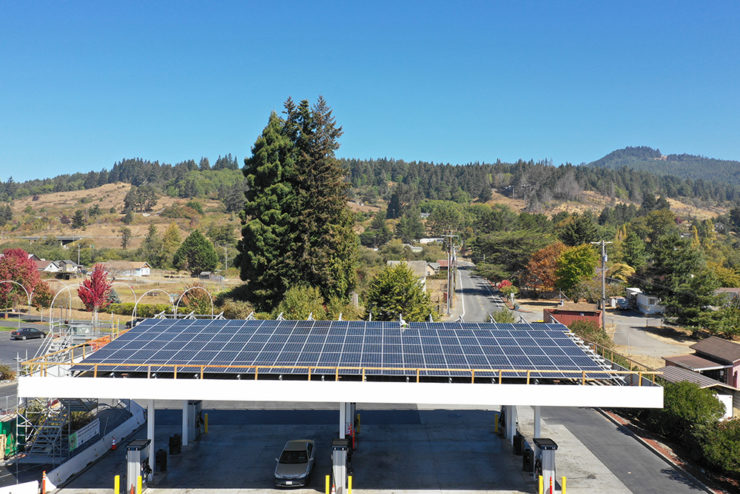The Solar+ project at the Blue Lake Rancheria (BLR) hit high gear this summer, with activity across our research and design areas — from engineering to market assessment. Our project is at the halfway point, with construction underway and plans afoot for experiments to run once we are operational next year. It has been rewarding to see progress towards a standardized package for microgrids at the building scale.
Over the summer, our engineering designs came into form as the PV array was installed at the Rancheria’s “Playstation 777” fueling station and convenience store. Our partners at BLR have been working closely with us to coordinate the construction and installation of a 60 kW array of high efficiency SunPower modules on the fueling area canopy. Later this year we will install control devices, switchgear, and other microgrid components.
In parallel to our work designing and installing the microgrid hardware, project partners at Lawrence Berkeley National Lab have been developing the control software that will eventually manage the microgrid. Building off the open source XBOS (“Extensible Building Operating System”) framework, the LBNL team has been adding model-predictive control and communications features needed to optimize the operation of our energy systems. We are in the testing phase for this software now, and look forward to its installation and operation in 2019.
Along with our progress on the prototype installation for our Solar+ microgrid design, we have been synthesizing our overall experience in microgrid design and development. Our cross-site analysis is helping us to model the current costs and benefits of microgrids based on the characteristics of a site — and we are looking ahead to future prices for PV, storage, and integration technology to understand possible deployment pathways for microgrids at scale.
We made a lot of progress this summer, thanks in great part to a crew of excellent summer research assistants. René DeWees and Ellen Thompson joined our market and data analysis team, and helped model the costs of microgrids (along with big contributions from Jo Caminiti and Thalia Quinn). Craig Mitchell joined the hardware design and construction team, and provided important on-site research observation and engineering support as we worked on building the PV array.














